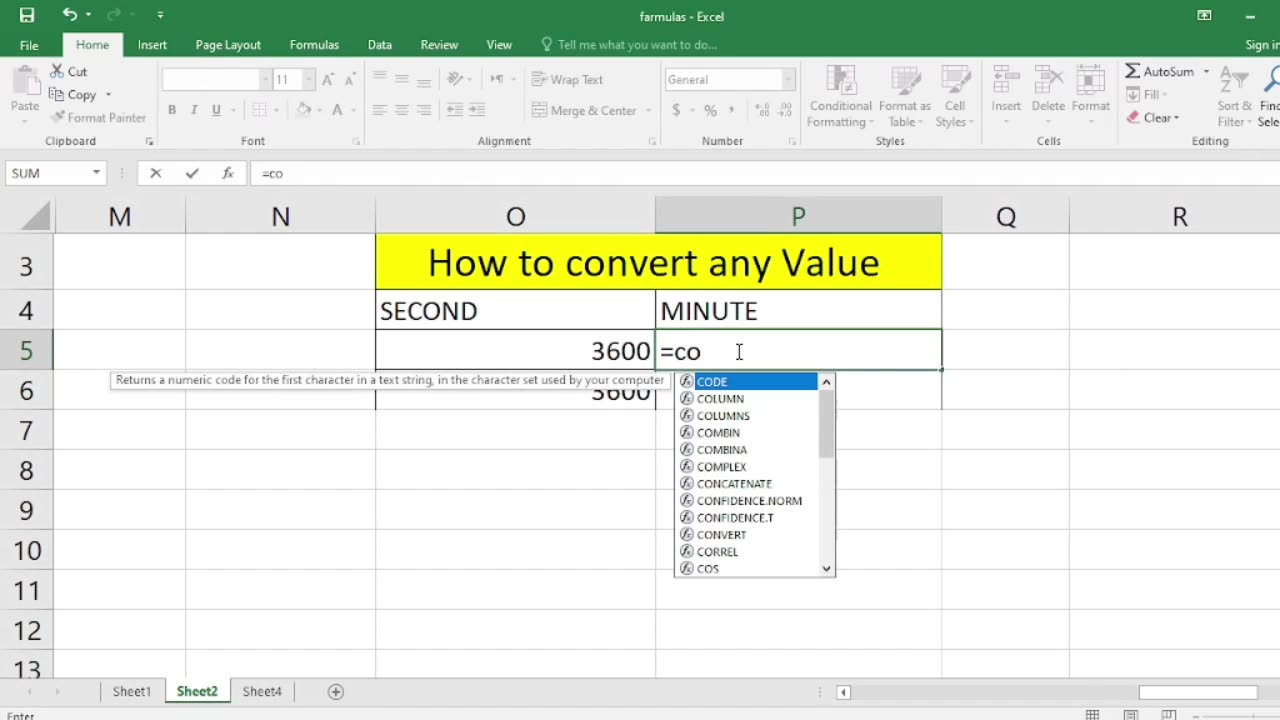Premium Only Content

How to convert any value in excel
In Microsoft Excel, you can convert values from one format or data type to another using various functions and tools. The method you use will depend on what you're trying to convert. Here are some common types of value conversions and how to perform them:
Text to Number Conversion:
If you have numbers stored as text, you can convert them to numeric values using the VALUE function. For example, if A1 contains the text "123," you can use =VALUE(A1) to convert it to a number.
Number to Text Conversion:
To convert a number to text, you can use the TEXT function. For example, if A1 contains the number 123, you can use =TEXT(A1, "0") to convert it to the text "123."
Date and Time Conversion:
You can format dates and times using the TEXT function. For example, to display a date in the format "MM/DD/YYYY," you can use =TEXT(A1, "MM/DD/YYYY").
Percentage Conversion:
To convert a decimal number to a percentage, multiply it by 100 and add the "%" symbol. For example, if A1 contains the decimal 0.75, you can use =A1*100&"%" to convert it to "75%."
Converting Formulas to Values:
If you want to convert the result of a formula to a static value (i.e., remove the formula), you can use "Copy" and "Paste Values." Copy the cell with the formula, right-click on the destination cell, choose "Paste Special," and select "Values."
Currency Conversion:
To convert from one currency to another, you can use external data sources or add-ins that provide exchange rate information. Excel has built-in features for currency conversion in some versions.
Unit Conversion:
You can create your own formulas to convert units. For example, to convert from pounds to kilograms, you can use the formula =A1 * 0.45359237 if A1 contains the weight in pounds.
Binary, Octal, and Hexadecimal Conversion:
You can use functions like BIN2DEC, OCT2DEC, and HEX2DEC to convert values between different numbering systems.
Custom Conversions:
For custom conversions, you may need to create your own formulas using mathematical operations, conditional statements, or lookup tables based on your specific requirements.
Remember that Excel provides a wide range of functions and tools for various types of conversions. The specific function or method you use will depend on the data and the desired outcome. Always ensure that your conversions are accurate and appropriate for your needs.
-
 LIVE
LIVE
Game On!
15 hours agoCollege Football SHOWDOWN! Week 5 EARLY Preview!
7,150 watching -
 9:26
9:26
Millionaire Mentor
15 hours agoMegyn Kelly STUNNED as Tucker Carlson Reveals The Truth About Charlie Kirk
22.2K11 -
 7:30
7:30
Blackstone Griddles
12 hours agoEasy Weeknight Meals: Meatloaf Sliders on the Blackstone Griddle
3602 -
 8:47
8:47
DropItLikeItsScott
14 hours agoDid HI-POINT Just Create The Next Best AR? Hi-Point HP15 AR-15 Pistol
401 -
 39:19
39:19
The Heidi St. John Podcast
3 days agoFirst Fan Mail Friday: From the White House to Your Questions
1.14K3 -
 LIVE
LIVE
BEK TV
22 hours agoTrent Loos in the Morning - 9/23/2025
207 watching -
 24:12
24:12
Michael Feyrer Jr
22 hours agoWe Stream to TikTok! How we did it! Week 2 #Stream10k
4 -
 35:33
35:33
Anthony Rogers
16 hours agoBourbon and Beyond (2025)
4.9K1 -
 33:30
33:30
The Bryce Eddy Show
4 days ago $0.03 earnedMonty Bennett: HERO Model to Fight Crime
8.15K3 -
 0:41
0:41
Living Your Wellness Life
3 days agoThe Prime-Years Transition
1.01K